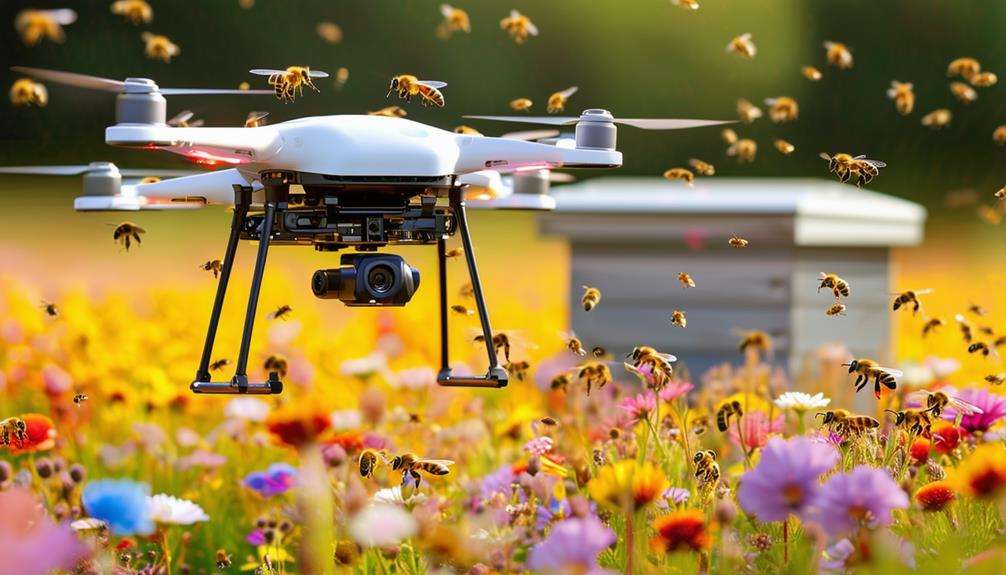Unmanned Aerial Vehicles: The Different Classes of Drones
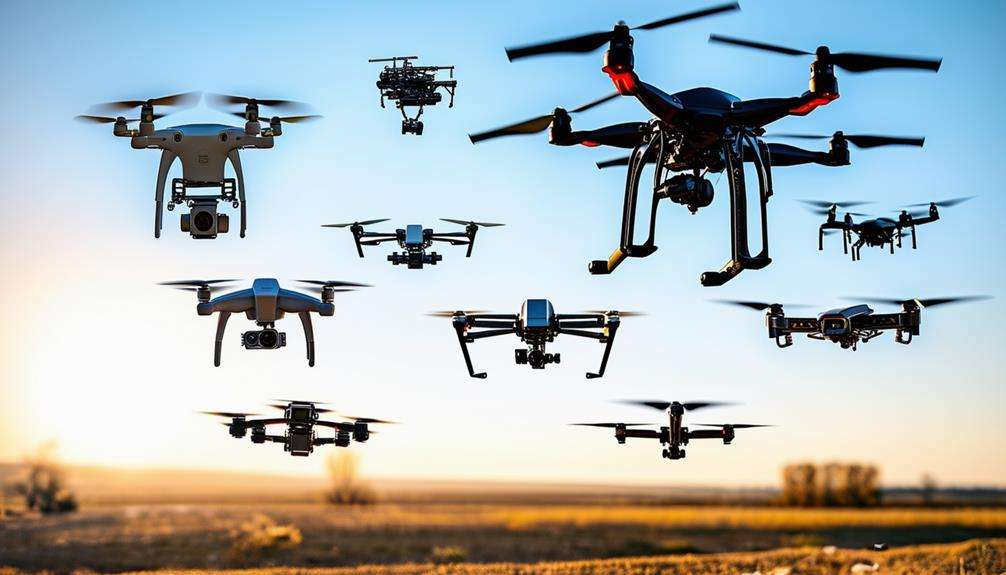
When you think about drones, you might picture hobbyists flying small devices in parks, but there's much more to it. Unmanned Aerial Vehicles (UAVs) come in various classes, each tailored to specific uses and regulatory requirements.
For instance, Class C0 drones are designed for beginners and require no license, while Class C3 drones, which can weigh up to 25 kilograms, include advanced features like flight termination systems. Understanding these classifications can help you choose the right drone for your needs and ensure compliance with legal standards. So, what makes these classes so distinct, and how do they impact your drone experience?
Overview of Drone Classes
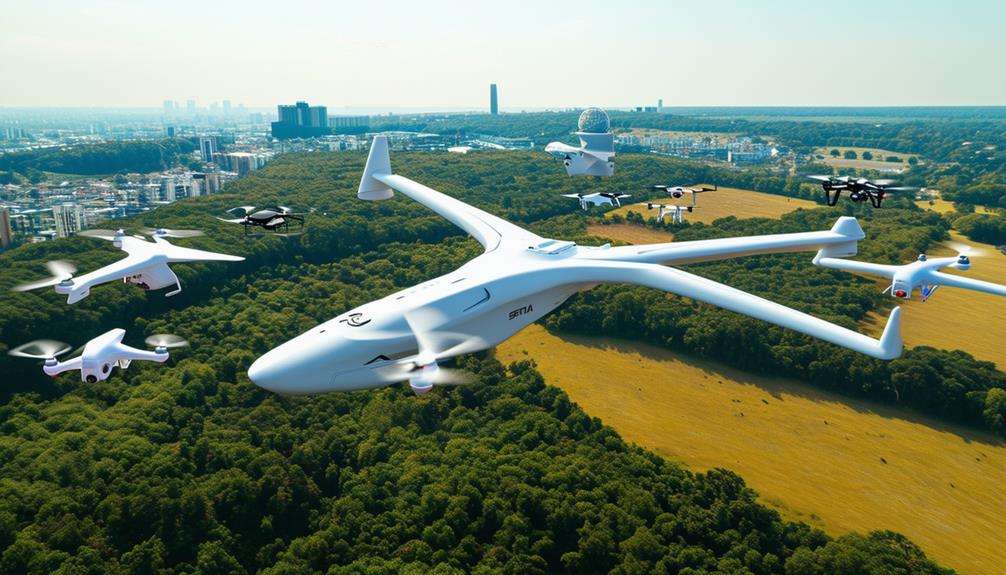
Drone classes are categorized based on weight, speed, and regulatory requirements to ensure safety and compliance with legal standards. When exploring various types of unmanned aerial vehicles (UAVs), the primary distinctions lie in their weight and the corresponding legal requirements. These classifications help manage the safe operation and control of these aircraft, ensuring adherence to operational guidelines.
For example, Class C0 drones are lightweight, under 250 grams, and don't require a license. However, they must still meet specific operational requirements, such as passing an EASA test. In contrast, Class C2 drones, which can weigh up to 4 kilograms, must include features like geo-awareness systems and remote identification to ensure safe and legal operations.
Class C3 drones, which can weigh up to 25 kilograms, require additional features such as a flight termination system and unique serial number marking. These features ensure that even heavier UAVs operate within legal and safety standards.
Other classes, such as C4, C5, and C6, each have distinct requirements and characteristics designed to facilitate controlled and safe aerial activities. Understanding these classes is essential for anyone looking to operate drones responsibly.
Class C0 Drones
Class C0 drones, weighing less than 250 grams, are ideal for beginners and hobbyists. These lightweight drones are designed primarily for recreational use, making them perfect for those just starting in the world of unmanned aerial vehicles.
Since Class C0 drones are so small, you don't need a license to operate them, simplifying the process for new pilots. However, you must still familiarize yourself with the operating instructions and pass an EASA online test to ensure responsible flying.
Understanding the regulations and requirements for Class C0 drones is crucial for safe operation. This includes knowing where you can and can't fly your drone and adhering to any local rules that may apply.
Class C0 drones are easy to handle and don't require a CE label for compliance, making them an attractive choice for casual flyers. Whether you're capturing stunning aerial photos or simply enjoying the thrill of flight, these drones provide an excellent starting point.
Class C1 Drones
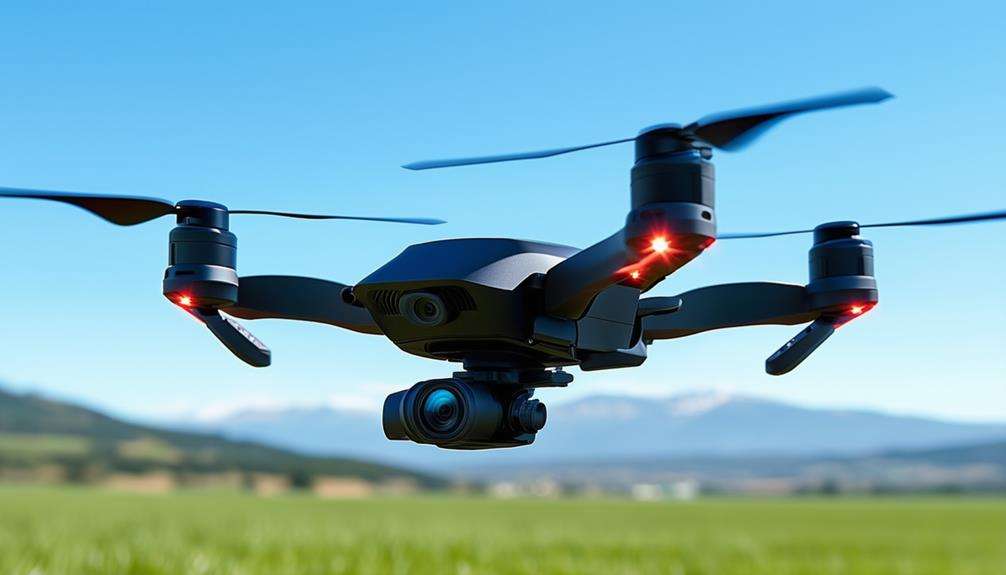
When you're ready to advance from beginner drones, Class C1 models offer an ideal balance of performance and safety features. These drones have a maximum take-off mass of up to 900g, making them more robust and capable than Class C0 drones. Designed for operation in the 'open' category under European drone regulations, Class C1 drones are versatile, allowing enthusiasts to engage in more advanced aerial activities.
Class C1 drones must adhere to a maximum speed of 19 m/s and aren't permitted to fly over people. This ensures they remain suitable for low-risk operations and recreational flying. You can enjoy their advanced capabilities while still complying with stringent safety standards. However, pilots need to be mindful of the specific operational limitations and safety requirements associated with these drones.
European drone regulations mandate that Class C1 drones meet certain criteria to maintain a balance between performance and safety. As a pilot, you'll need to ensure your drone operates within these guidelines to avoid any legal complications.
Class C2 Drones
As you progress through drone classes, Class C2 models stand out for their enhanced capabilities, featuring a maximum weight limit of 4kg. This increased capacity allows these drones to carry more sophisticated equipment, expanding their versatility for a variety of tasks.
Class C2 drones come equipped with a geo-awareness system, significantly enhancing safety and operational efficiency. This feature prevents the drone from entering restricted areas, ensuring compliance with regulations. Additionally, these drones must have remote identification, enabling authorities to track and identify them in real-time, thus promoting accountability and legal operation.
Class C2 drones are especially valuable for aerial photography and surveillance tasks. Their higher weight limit allows them to carry advanced cameras and sensors, delivering superior image quality and detailed data collection. Whether capturing breathtaking landscapes or conducting meticulous inspections, these drones provide the necessary tools for the job.
Adhering to regulations is crucial when operating Class C2 drones. Compliance not only ensures legal operation but also enhances the overall safety and effectiveness of your activities.
Class C3 Drones
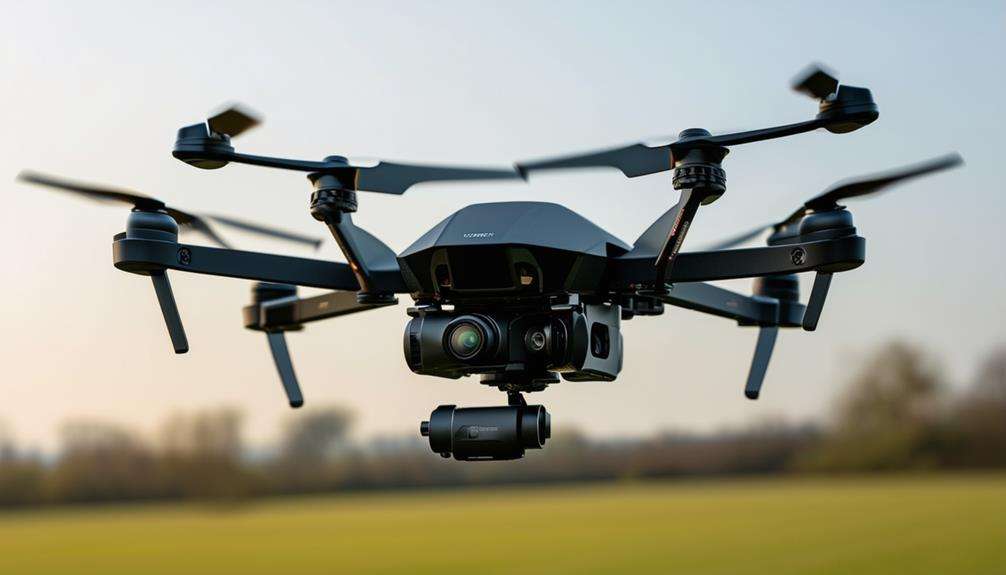
Exploring the world of Class C3 drones reveals models weighing under 25kg, equipped with features like flight termination systems and unique serial number markings to enhance safety and traceability. These drones are classified based on specific weight limits and safety requirements set by aviation regulatory bodies.
The weight limit of under 25kg ensures that Class C3 drones are both manageable and safe for recreational and professional use. Regulatory bodies enforce these limits to minimize risks during flight operations. Unique serial number markings aid in the identification and traceability of each drone, facilitating ownership tracking and operational history.
Compliance with all Class C3 requirements is essential for legal operation. This includes adhering to safety standards designed to protect both operators and the public. The drone industry depends on these regulations to maintain high safety levels and foster trust among users.
Conclusion
Understanding the different drone classes is crucial for safe and legal operation. Class C0 drones are ideal for beginners as they don't require a license. In contrast, Class C3 drones are suited for both recreational and professional use, offering advanced features and compliance with legal regulations. By familiarizing yourself with these classifications, you can make informed decisions about which drone to choose, ensuring safe and confident flying whether you're a hobbyist or a professional. Happy flying!




